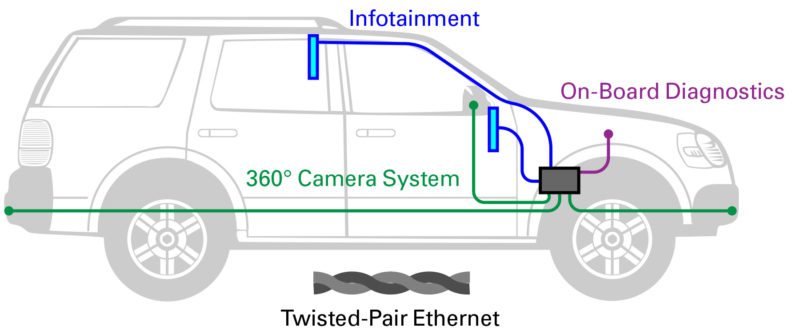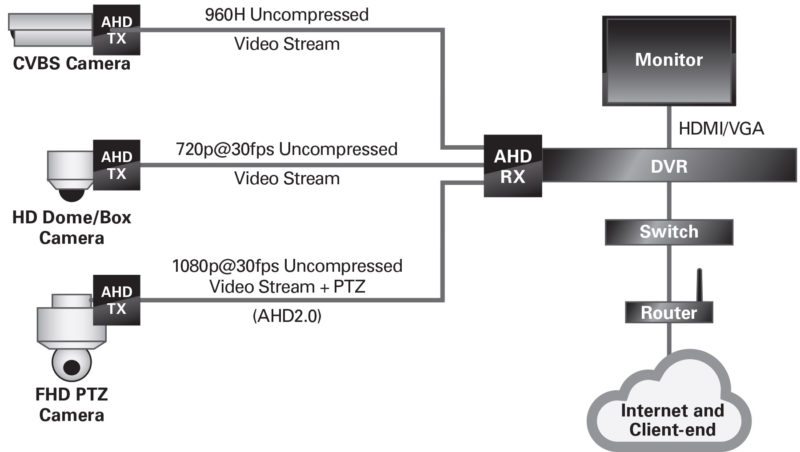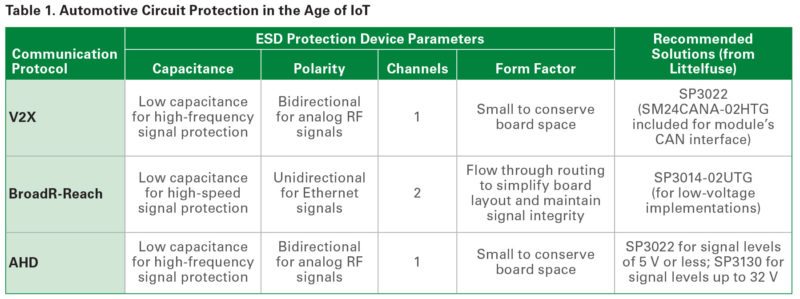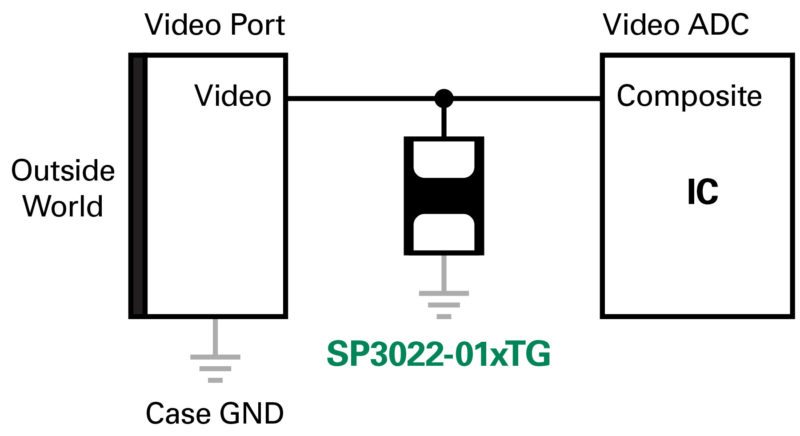
New communications protocols require advanced protection for connectivity and reliability
Previously, vehicles were built with multiple independent electronic systems. The assembly lines used to manufacture automobiles even required the operation and management of multiple independent systems. However, the emergence of the Internet of Things (IoT) has changed automotive electronics and assembly dramatically. Connectivity that used to only be limited to the office or home is now available in modern automobiles. The car itself is now the center of communication.
New protocols are being developed and implemented to promote connectivity and facilitate broadband-like vehicle communications. The increase in connectivity, while making automobiles safer and providing more capabilities to consumers, is also presenting technical challenges to the design engineers developing these modules. The technologies from which chipsets are made become smaller and denser as automotive circuit functionality becomes more advanced, resulting in higher susceptibility to electrostatic discharge (ESD). Therefore, design engineers need to be aware of the unique circuit protection requirements of these chipsets to ensure their dependability in the automotive environment.
This article examines the characteristics and benefits of three new communication protocols: V2X, BroadR-Reach and Analog High Definition (AHD). Then, it will discuss the unique ESD protection requirements for each protocol and examine the latest circuit protection solutions designed to guarantee the long-term reliability and connectivity of automotive electronics.
The Power of New Protocols
Design engineers and manufacturers should utilize new protocols to meet consumer demands for increased convenience, safety and mobile communications. The following protocols are at numerous stages of development and implementation:
• V2X Provides Safe and Efficient Road Travel
The V2X protocol allows the vehicle to communicate with roadway infrastructure and other vehicles, providing enhanced driver safety and efficiency. The protocol concept has been tested, while the standards and hardware/software coordination are still under development.
Vehicle-to-vehicle (V2V) communications allow the vehicle to perform real-time, dynamic calculations based on the location and velocity of other vehicles. If the calculation indicates an imminent collision, the system notifies the driver or autonomous vehicle to take evasive action, preventing the vehicle from hitting other vehicles or pedestrians. According to the U.S. Department of Transportation, V2V communications could address up to 79 percent of vehicle crashes.
Vehicle-to-infrastructure (V2I) communications allow a roadway traffic system to collect key data such as the direction of the moving vehicle or the vehicle’s rate of speed. During rush hour, the system can use this information to control the timing of traffic lights, enabling synchronized, highly efficient traffic movement.
Additionally, V2X could allow location-based marketing and advertising. For example, when a driver is approaching a particular location (for instance, a city or neighborhood), he or she could be notified about items or places in that locale based on a preset profile or individual preferences. The driver could receive information about a sale at a retail store along the route or a restaurant serving his or her favorite cuisine.
• BroadR-Reach Replaces Slow Buses and Decreases Cabling
Currently in early implementation, BroadR-Reach technology will allow multiple in-vehicle systems, such as automated driver assistance or infotainment, to simultaneously access high-bandwidth data throughput over a single, unshielded twisted pair cable.

A possible application of BroadR-Reach technology involves integrating and streamlining communication on the controller area network (CAN) bus network. The CAN bus communicates with several important systems in the vehicle, including the engine control module (ECM), powertrain control module (PCM), instråument cluster, airbags, anti-lock braking system, and cruise control. The CAN bus, while standard and reliable, is also relatively slow. Since modern automobiles are now expected to gather information from hundreds of sensors throughout the vehicle, this may create a severe bandwidth issue—especially when digital video signals are added to the system.
As an Ethernet-based protocol, BroadR-Reach uses two communication lines instead of four, enabling 100 Mbps communication. It can be used to combine a significant number of slow lines (e.g., CAN bus), thus removing the need to run those lines around the vehicle. Or it can be used as a high-speed link that can move various types of data around the vehicle. Therefore, one BroadR-Reach bus can replace many slow buses—reducing the physical amount of cable that is installed in the vehicle. The reduction in cable leads to cost savings, a reduction in overall vehicle weight and simplified cable routing.
• AHD Enables Fast, Versatile Video Transmission
AHD 1.0 Tx/Rx is currently being developed to handle analog signals from various types of high-definition cameras located around the automobile for safety and surveillance. It transmits 720p at 25fps/30fps with minimal data loss, while simultaneously supporting CVBS and COMET signals.
Despite the use of analog signals, the cameras must have the ability to transmit high-definition video throughout the vehicle’s network. AHD is designed to relay multiple high-definition video signals that could otherwise be managed by a complex HDMI connection. By supporting a variety of video transport protocols, AHD proves to be a versatile solution that allows for backward compatibility for legacy modules that will not phase out in the immediate future. The AHD line can transmit new high-speed data as well as lower speed protocols on the same wire and using the same chipset.

Circuit Protection Solution Strength
With the rise in IoT devices and new communication protocols, unique demands are now being imposed on engineers who build automotive modules and applications. To create robust, reliable designs, engineers need to consider ESD protection solutions early in the design process to address the increased sensitivity of today’s vehicle chipsets. Engineers should also review and understand the system-level ESD testing required for these modules. The following ESD protection solutions will help design engineers produce automotive modules that adhere to the safety and test standards of the latest communication protocols:


Conclusion
In the age of IoT, new protocols are being developed to facilitate automobile-based communications and promote safety. V2X is intended to help vehicles to communicate with the road and each other to optimize traffic flow and prevent collisions. BroadR-Reach and AHD are being researched and produced to increase the efficiency and speed of high-speed data transmission—including high-definition video signals. Highly sensitive chipsets and requirements for faster data require unprecedented ESD protection for vehicle modules that will employ these new protocols. Low-capacitance, low-clamping ESD protection devices in a compact footprint will help make advanced vehicle operation safe, reliable and efficient.
About the Author
Jim Colby is a manager of semiconductor business development at Littelfuse, Inc. His responsibilities include identifying and developing strategic growth markets as well as introducing new products into those markets. He received his BSEE from Southern Illinois University (Carbondale) and his MBA from Keller Graduate School of Management (Schaumburg). He has been with Littelfuse for over 15 years and has worked in the electronics industry for more than 23 years.






